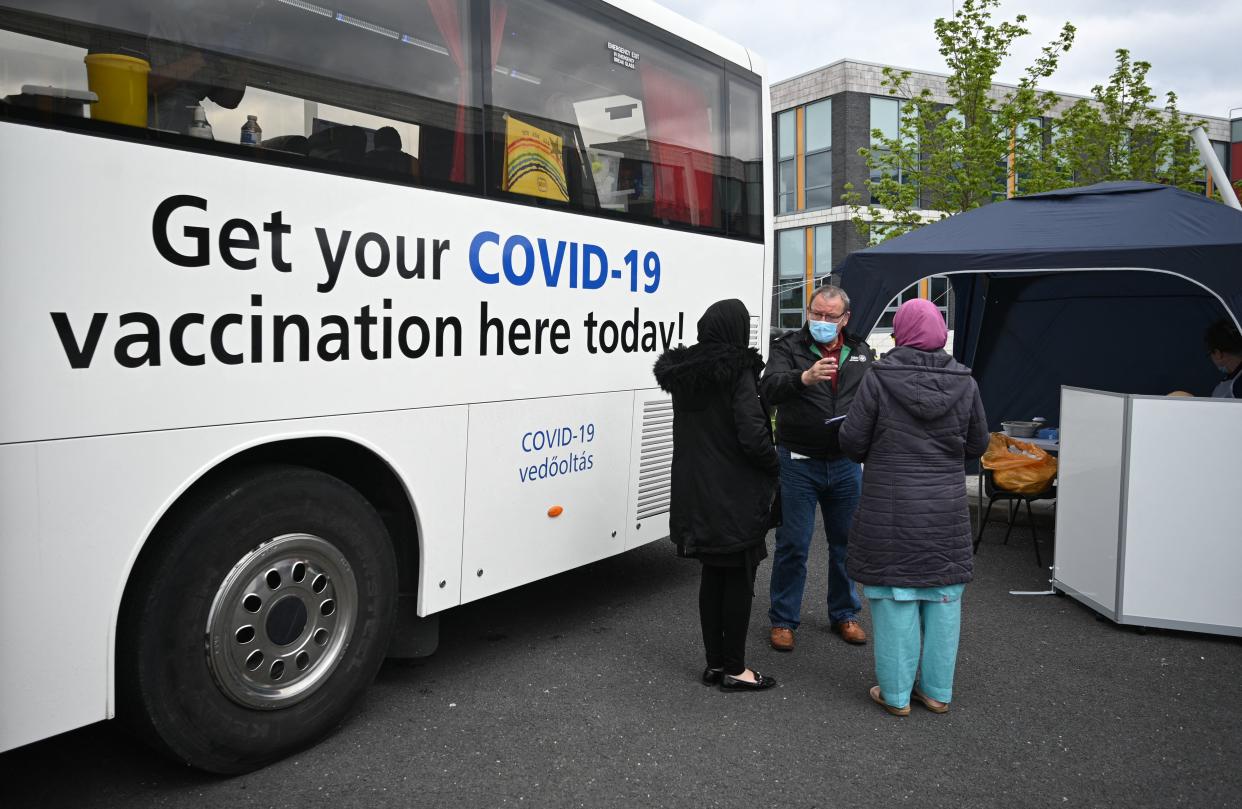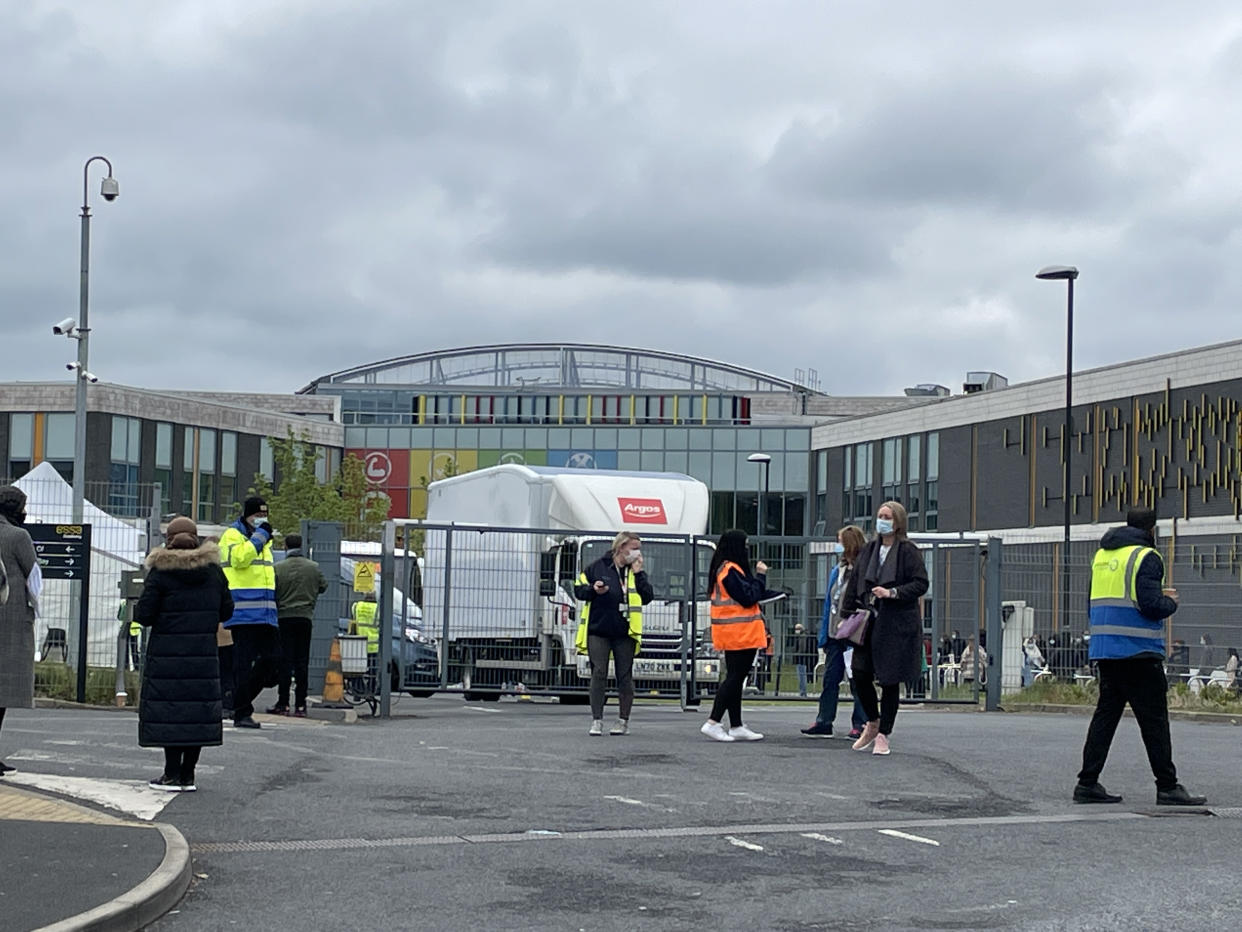10 worst-hit Covid areas in England amid concerns over Indian variant
The Indian coronavirus variant has been detected in a number of areas in England which are reporting the highest rates of infection, the latest data suggests.
The latest government figures on coronavirus cases in England, for the seven days to 10 May, are based on the number of people who have tested positive for Covid-19 in either a lab-reported or rapid lateral flow test, by specimen date.
The rate is expressed as the number of new cases per 100,000 people.
Of the 315 local areas in England, 185 (59%) have seen a rise in rates, 119 (38%) have seen a fall and 11 are unchanged.
Bolton in Greater Manchester has the highest rate, with 657 new cases in the seven days to May 10 – the equivalent of 228.5 cases per 100,000 people.

Scientists have called on the government to introduce “surge vaccinations” in areas of England that have seen a recent rise in cases linked to the variant, and on Friday more vaccine doses were delivered to Bolton, which has a particularly high rate of the Indian variant.
Meanwhile, 800,000 emergency polymerase chain reaction (PCR) Covid tests have been sent to 15 areas of England, including parts of London and Merseyside.
Erewash in Derbyshire has the second highest rate of infections, up from 88.4 to 163.0, with 188 new cases.
Blackburn with Darwen has the third highest, up from 56.8 to 111.6, with 167 new cases.
The news comes as four people are confirmed to have died from the Indian variant in the past 24 hours.
Data from Public Health England (PHE) published on Friday shows a rise in cases of the Indian variant of concern from 520 to 1,313 in the UK this week, with the agency saying infections were “rising in the community” and it was assessing the impact and severity.
Although the Indian variant is thought to be highly transmissible, vaccines are still expected to be effective against it.
The majority of the 1,313 cases of the B16172 variant, which was first identified in India, are in England, with PHE reporting 35 in Scotland, 11 in Wales and 12 in Northern Ireland.
The Department of Health and Social Care said most cases are in the North West of England, with some in London.
However, a PHE report said that 400 (31.9%) of the confirmed and probable cases of the Indian variant in England were in London, followed by 319 (25.4%) in the North West.
Eastern England had 152 cases (12.1%), the East Midlands 129 (10.3%) and there were 98 in the South East (7.8%), while the North East region had the lowest number of cases of the variant at 19 (1.5%).
The variant has been detected in Bolton, Greater Manchester; Blackburn in Lancashire; and Sefton in Merseyside, which have all seen rates rise rapidly.
However, speaking at the Downing Street press conference on Friday, Boris Johnson confirmed that Monday's lockdown easing in England was still going ahead.
He said: “I do not believe that we need, on the present evidence, to delay our road map and we will proceed with our plan to move to step three in England from Monday.
“But I have to level with you that this new variant could pose a serious disruption to our progress and could make it more difficult to move to step four in June.”
Johnson added that if the Indian variant proves to be “significantly more transmissible” than other strains “we’re likely to face some hard choices”.
“I’m told that if it is only marginally more transmissible we can continue more or less as planned but if the variant is significantly more transmissible we’re likely to face some hard choices.”
But he also said there is “no evidence to suggest that our vaccines will be less effective in protecting people against severe illness and hospitalisation”.
He added that there is "high likelihood" of a further surge in cases and hospital admissions this autumn, and declined to rule out a further lockdown.

The 10 areas in England with highest number of coronavirus cases per 100,000
Bolton, 228.5
Erewash, 163.0
Blackburn with Darwen, 111.6
Bedford, 105.0
Selby, 69.5
Kirklees, 63.0
Melton, 58.6
Sefton, 56.8
Hounslow, 54.1
Wellingborough, 52.7
Also on Friday, first minister Nicola Sturgeon announced that Glasgow and Moray would say on Level 3 restrictions, while the rest of Scotland would move to Level 2 on Monday.
People are being advised not to travel in or out of the affected Scottish council areas, although Sturgeon added that she was optimistic that increased testing and vaccination would help to curb the increased spread of the virus.
Meanwhile in Wales, plans to allow pubs to trade indoors and for cinemas and museums to reopen will also go ahead on Monday.
However, first minister Mark Drakeford said ministers had considering further relaxing lockdown restrictions but decided to hold back for more advice, taking into account the Indian variant.
Earlier in the week, the European Medicines Agency announced that jabs using MRNA technology, such as Pfizer and Moderna, seem able to "neutralise" the Indian strain.


